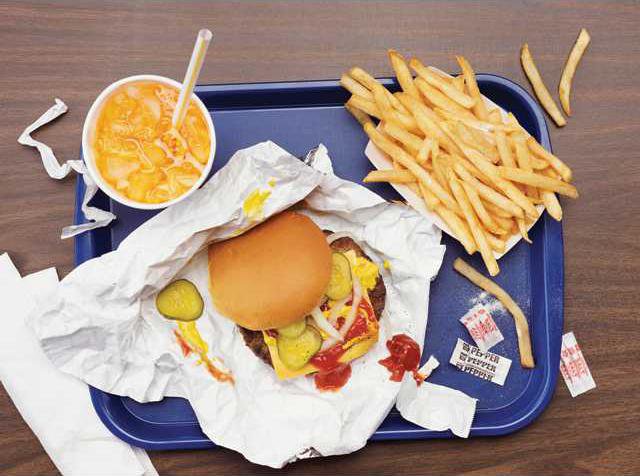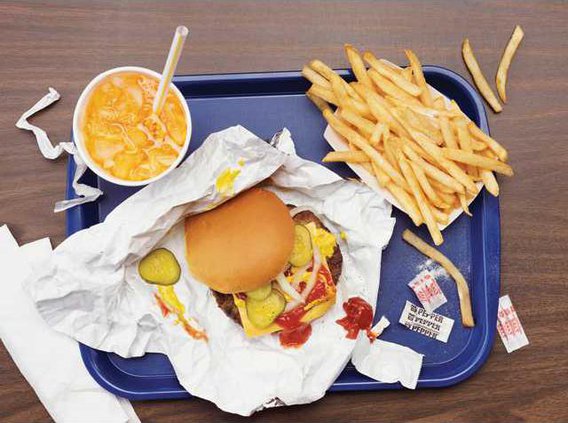There probably are few people now living in the United States who have not eaten food from a McDonald’s restaurant at some point.
I do not recall the first time I ate at McDonald’s, but I do know there were none around when my children were young. My husband and I enjoy eating at them quite often. We like the sausage and biscuits during the breakfast hours and the hamburgers and chicken sandwiches at lunch or supper. And we always enjoy the dollar cone of soft ice cream after our meal. We find the ones in Glennville and Pembroke are convenient with fast service.
When traveling around the state, we may not know what to expect in other restaurants, but we know what to expect in any McDonald’s we go in. Young people take it for granted that there were always these fast-food places available. Not so.
When my three children were younger and we went on vacation to the mountains or a state park, we usually carried food with us. I remember when we once stopped near Soperton for lunch while going to the mountains. There was a small park near the road with a few picnic tables. I had packed fried chicken, potato salad, chips, Debbie cakes and a gallon milk jug of sweet tea in the cooler for lunch. While at parks, we grilled hamburgers or hot dogs, or we fried chicken or fish. It would have been convenient to have had fast-food places around.
A 1981 Saturday Evening Post magazine was among the items in a junk box I once bought at auction. I thumbed through the magazine and found a story about the man who made McDonald’s, Raymond Albert “Ray” Kroc. It was interesting to me.
Kroc was of Czech origin and grew up in a middle-class family. On the day his father died, there were two pieces of paper on his father’s desk — his paycheck and a garnishment notice for the entire amount. This was during the Great Depression.
Ray Kroc was a school dropout. As a young man, he played piano in bars and later sold real estate in Florida. He lied about his age at 15 and was in training to become an ambulance driver in Connecticut along with Walt Disney. But the war at that time ended, and he was not needed. He sold paper cups when they were a rarely sought commodity.
Then, he started selling Prince Castle Multimixer machine, which could make five milk shakes at once. This job would cause him to become a billionaire in a roundabout way.
When he was 52, Kroc was an incipient arthritic and a diabetic, his gall bladder and thyroid gland had been removed, and his business was at a dead end. He had to come up with a new idea to keep his dreams alive.
One day, Kroc got an order for eight multimixers from a small hamburger joint in San Bernardino, Calif. He just had to go and see what kind of business needed this many mixers. He found a small, spotless drive-in, with people lined up for service. He got in line and talked to people about the place. They told him that a hamburger there was 15 cents, a cheeseburger was 19 cents, and French fries were 10 cents. Coffee was a nickel, and a malt or milk shake was 20 cents. The choices were few, but the quality, speedy service and prices could not be beaten anywhere else in town.
Kroc got his food and waited to talk to the owners, brothers Dick and Maurice McDonald. Kroc thought if he could talk the brothers into building a couple more hamburger joints, he could sell 16 more mixers. And if they would build 10 more, he could sell 80 mixers. Selling mixers was foremost in his mind.
The McDonald brothers told him that they had tried to have a couple of other places, but the managers didn’t do things as they did them. They did not prepare the food the same way and did not keep the places as clean. The brothers could not depend on anyone to do the job as they did. It did not take long for Kroc to talk the brothers into letting him buy into the business and build more and look after them himself. He secretly figured he could sell more mixers if he was on the inside of businesses.
He was going to keep the name McDonald’s, as Kroc did not sound good.
Kroc studied the brothers’ menu and got their recipes and floor plans. He built the first McDonald’s in 1955 in Chicago. However, he had several problems. One was that he could not get the French fries to look and taste as the brothers’ did. He found that it was the way he stored them, so he learned how. Later, to make sure he had enough potatoes for all his stores, he began buying entire crops of Idaho russet Burbank potatoes.
By 1958, McDonald’s had sold its 100 millionth hamburger.
During the next few years, there were many legal battles with the McDonald brothers, but Kroc stuck it out and maneuvered his way through each battle. He was not one to give up. He had opened about 200 stores with the golden arches when he finally decided he had to give up his job selling mixers.
In 1961, Ray Kroc bought out the McDonald brothers. It took $14 million to do so. This included the interest and costs associated with borrowing that amount of money. Also that year, he opened the Hamburger University in Illinois, a training program for franchisees and operators. They were trained in the scientific methods of running a McDonald’s. They also were taught the core of the values that the business stood for: principles of quality service, cleanliness and value. By 1981, more than 80,000 people had graduated from there. The 1981 article in the Saturday Evening Post stated that it took $250,000 then to get into a McDonald business.
In 1963, Kroc began selling stock to the public for $22.50 per share. By that evening, it had climbed to $30, and a short time later it was $50. He suddenly found himself worth hundreds of millions of dollars.
When Disney was building Disneyland, Kroc wrote to his old acquaintance from the ambulance-driving school and asked him if there could be a McDonald’s placed in it. Disney said yes — if the price of French fries would be increased from 10 to 15 cents and he could keep the nickel off each order. Kroc quickly refused, saying he would not gouge his customers. So, no McDonald’s was in Disneyland when it opened, according to “Fast Food Nation: The Dark Side of the All-American Meal.”
In 1974, Ray Kroc bought the San Diego Padres baseball team. He once remarked that there is more future in hamburgers than baseball. In 1978, Kroc had a stroke and was required by doctors to take medications for his condition. Since the medications could not be used with alcohol, he had to enter alcohol rehab. He died of heart failure on Jan. 14, 1984, at the age of 81, leaving a widow, Joan. He had been married twice before, with both ending in divorces, and had no children.
The McDonald Corporation has supported many good causes. One is the Ronald McDonald House, which is used for parents of young children to stay in when the child is hospitalized. (The above paragraph was summarized from the book “Ray Kroc” and “Bob Chandler’s Tales from the San Diego Padres.”)
I cannot end this article without mentioning one of my dear friends who passed away July 13, 2013. Gary Dodd, often called McDodd, owned McDonald’s restaurants in Hinesville, Glennville, Jesup and Claxton and was planning to open one in Walthourville. Gary had his first McDonald’s franchise when he was only 25 years old and spent 47 years as an employee or franchisee of McDonald’s. He came to Hinesville around 1983 and became a one of the community’s greatest humanitarians. The entire community still misses him greatly.
He was involved with many good projects in the community and with Hinesville Methodist Church. He gave God all the glory for blessing him so abundantly.
Gary died at the young age of 62 from complications with skin cancer that he battled for several years. He left behind a widow, Lisa, and three children, Brent, Jason and Ashley, and their families. A son, Ryan, had preceded him in death.
If all the McDonald’s now located all over the world have as fine a fellow as Gary Dodd was, they’re in good hands!
McDonald's is household word thanks to milk shake mixers
Liberty lore


Sign up for our e-newsletters